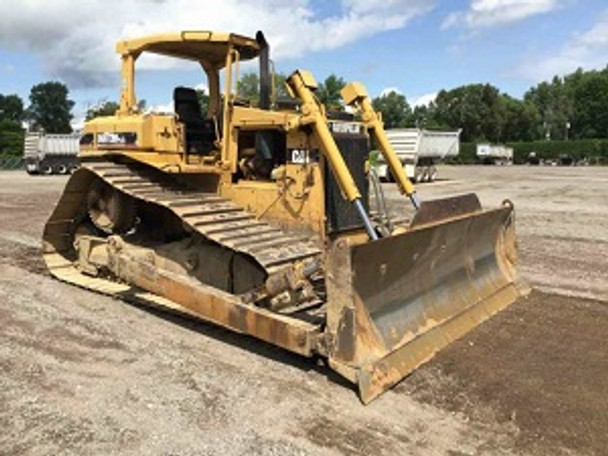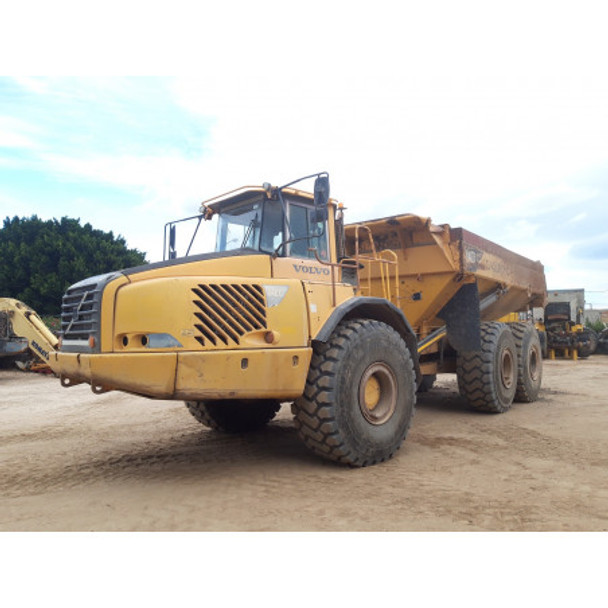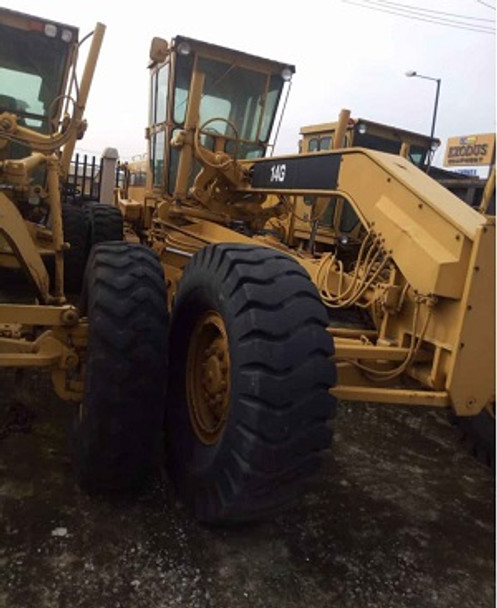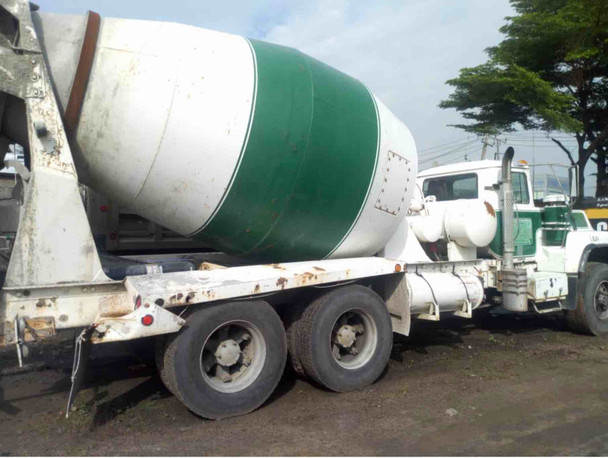Essential Safety Tips for Operating Heavy-Duty Machinery
Operating heavy-duty machinery is a crucial task that demands precision, caution, and a deep understanding of safety protocols. Firstly, undergo comprehensive training to understand the machinery's intricacies and safety protocols thoroughly. Always conduct pre-operation inspections, checking for any potential issues that could compromise performance. Prioritize the use of personal protective equipment (PPE) to shield against potential hazards. Follow recommended operating procedures diligently, adhering to guidelines and emergency shutdown protocols. Maintain clear communication with colleagues through signal systems or hand signals, fostering a collaborative and safe working environment.
Caterpillar Bulldozer CATERPILLAR D6H LGP Fairly used Imported
Additionally, prioritize operator well-being by managing fatigue and stress, ensuring operators are alert and focused during tasks. Lastly, foster a culture of continuous improvement, regularly reviewing and updating safety procedures to align with industry best practices. By incorporating these tips, operators can enhance safety, prolong machinery lifespan, and contribute to a secure working environment.
Whether you're a seasoned operator or a novice stepping into the world of heavy-duty machinery, this guide is designed to provide essential insights and tips to ensure a secure working environment. From the importance of proper training to the significance of regular equipment inspections, join us on a journey where safety takes center stage in every operation. Let's delve into the key practices that safeguard both operators and the integrity of heavy-duty machinery.
Learn more on; The Best Safety Work Procedures for Welders in Nigeria
Safety Tips for Operating Heavy-Duty Machinery
1. Importance of Proper Training
One of the most important safety tips for operating heavy-duty machinery is to make sure that the operators have received proper training before they start working. This is because operating heavy-duty machinery demands a unique combination of theoretical knowledge and practical skill. As such, to safeguard lives and maximize efficiency, proper effective training is not merely a recommendation, but a necessity.
Effective training programs strike the right balance between classroom instruction and real-world application. Operators delve into the complexities of machine operation, including functions, potential hazards, safety protocols, and emergency procedures. This theoretical foundation is then solidified through hands-on practice, allowing operators to master the machinery in different scenarios.
Beyond basic training, certifications and ongoing education also play a crucial role in maintaining operator competence. Certifications validate acquired skills and enhance employability, while continuous learning ensures operators stay aware of industry advancements and refine their expertise.
But training doesn't stop at textbooks and certifications. Practical experience under the watchful eyes of experienced mentors is invaluable. On-the-job application allows operators to translate theoretical knowledge into practice, gain confidence, and learn from both successes and mistakes.
2. Understanding Machinery Specifications
Another important safety tip for operating heavy-duty machinery is to understand the specifications of the equipment. The specifications provide essential information about the capabilities and limitations of the machinery. Understanding the specifications can help the operators avoid overloading, overheating, or damaging the equipment, as well as prevent accidents and injuries.
Operators must be familiar with the equipment's maximum load, speed, power, range, and maneuverability, factoring in environmental and operational conditions like terrain, weather, and visibility. Strict adherence to these boundaries ensures safe operation and avoids exceeding the machine's capacity. For example, the operators should not lift more than the rated capacity of a crane, or drive faster than the recommended speed of a bulldozer.
The operators should also read and interpret the manuals and specifications that come with the equipment. These documents provide detailed information about features, functions, components, controls, indicators, warnings, and maintenance procedures. Operators should treat them as their guiding light, following instructions and consulting them for clarifications. Keeping them readily accessible and updated allows for continuous learning and adaptation.
Finally, on this point, the operators should also know the machinery’s safety features. Familiarity with safety features like emergency stop, brakes, seat belts, horns, lights, and fire extinguishers is crucial. Operators should ensure they function properly before and during operation, utilizing them promptly in emergencies. Reporting any defects and having them repaired immediately maintains the safety net.
3 Pre-Operation Inspection Procedures
Thorough pre-operation inspections are another important step of safe heavy-duty machinery operation. Operators must conduct systematic checks of their equipment and the surrounding environment, not relying on past inspections. These checks involve both visual and functional assessments, covering tires, brakes, controls, safety features, fluids, and more. Any signs of damage, wear, or malfunction must be reported immediately.
Creating a pre-operation checklist can also be quite valuable, ensuring no vital aspects are overlooked. Operators can create and update these checklists based on manufacturer recommendations, employer policies, and specific equipment.
Pre-Operation Inspection Procedures for Heavy-Duty Machinery include:
- Check the exterior for damages, leaks, and wear.
- Verify fluids, safety devices, and controls.
- Inspect tires/tracks, leaks, and documentation.
- Perform functional tests and ensure operator comfort.
Beyond equipment checks, operators must identify and address potential issues like weather, terrain, and other hazards. Adjusting speed and load based on conditions and utilizing warning signs are crucial safety measures that should not be overlooked. Additionally, having a contingency plan prepared for unforeseen events ensures operators are ready to respond effectively.
Volvo A40D articulated dump truck 6X6 year 2007 (used)
4. Personal Protective Equipment (PPE)
Another important safety tip for operating heavy-duty machinery is to wear appropriate personal protective equipment (PPE). Operating heavy machinery demands a commitment to safety, and appropriate Personal Protective Equipment (PPE) is the first line of defense. From head to toe, PPE protects operators from diverse hazards like flying debris, noise, dust, chemicals, and heat.
The essential PPE for heavy-duty machinery operators
The type and level of PPE required for heavy-duty machinery operators may vary depending on the specific equipment, task, and environment. However, some of the common and essential PPE items that operators should wear are:
- Head protection: A hard hat or a helmet that covers and protects the head from impact, penetration, or electrical shock. The head protection should be fitted, secured, maintained properly, and replaced if damaged or expired.
- Eye Protection: Safety glasses or goggles ensure clear vision while safeguarding eyes from flying particles, dust, sparks, and glare. Comfort and compatibility with head and respiratory protection are key.
- Hearing Protection: Ear plugs or muffs reduce harmful noise exposure, protecting your hearing. Selecting the right protection based on noise level and frequency is essential, along with consistent and proper wear.
- Respiratory Protection: Depending on potential exposure to dust, smoke, or fumes, masks or respirators filter air and prevent inhalation of harmful substances. Choosing, fitting, and using them according to manufacturer and employer guidelines is crucial.
- Hand Protection: Durable gloves made of leather, rubber, or synthetic fibers shield hands from cuts, abrasions, burns, and chemicals. Snug fit and comfort are essential for optimal protection.
- Foot Protection: Steel-toed boots with non-skid soles and ankle support safeguard feet from crushing, puncturing, and slipping. Clean, dry boots are key for maintaining safety.
- Body protection: Clothing that covers and protects the body from heat, cold, sun, or moisture. The clothing should be made of breathable and fire-resistant fabrics, such as cotton, wool, or synthetic blends, and be loose and comfortable. The clothing should also be high-visibility, such as orange, yellow, or green, and have reflective strips or tapes.
Beyond just wearing PPE operators should also do the following:
- Check their PPE before and after every use, reporting any damage, wear, or malfunction for immediate repair
- Clean their PPE regularly and store it in a clean, dry, and protected location.
- Adhere to manufacturer and employer instructions for PPE selection, use, and maintenance.
5. Safe Operating Procedures
Safe operation of heavy machinery hinges on adhering to recommended guidelines and procedures. These guidelines, provided by manufacturers and employers, outline optimal settings and conditions for equipment usage, ensuring both efficiency and safety. Operators must stay within these boundaries, never overloading, underloading, or exceeding recommended speeds. Understanding emergency shutdown procedures is equally crucial. Operators must be familiar with actions to take in case of fire, collision, or power failure, including safe stopping, securing, and exiting the equipment, activating alarms, contacting emergency services, and reporting incidents.
General safe operating procedures for heavy duty machinery include:
Training and Authorization:
- Only trained and authorized personnel should operate the machinery.
- Understand emergency procedures and safety measures. Seek clarification on any doubts regarding safe operation.
- Possess necessary licenses and certifications as required by local regulations.
Know Immediate Actions:
- Be aware of emergency shutdown procedures in case of malfunctions or emergencies.
- Familiarize yourself with how to immediately stop machinery operation to prevent accidents or further damage.
Emergency Preparedness:
- Know evacuation protocols and assembly points during emergencies.
- Locate and understand the use of fire extinguishers, first aid kits, and emergency contact information.
Operating Procedures:
- Always wear the appropriate Personal Protective Equipment (PPE).
- Avoid operating machinery if under the influence of drugs, alcohol, or any impairing substances.
- Follow recommended load capacities to prevent overloading risks.
Safe Operation Protocols:
- Maintain safe distances from bystanders and unauthorized personnel during operation.
- Continuously scan the surroundings for potential hazards or obstacles that could impact safe operation.
- Use designated communication methods when working with others or relying on spotters.
Maintenance and Shutdown Practices:
- Stick to the manufacturer's maintenance schedule and conduct routine checks.
- Shut down machinery completely before performing maintenance or repairs.
- Use lockout/tagout procedures during servicing to avoid accidental startup.
Documentation and Reporting:
- Keep detailed records of operations, maintenance, and any incidents or near-misses.
- Immediately report any malfunctions, defects, or safety concerns to supervisors or maintenance personnel.
Caterpillar Motor Grader 140H Used Heavy Equipment imported clean
6. Communication Protocols
Effective communication is the cornerstone of safe and coordinated heavy-duty machinery operations. Operators must master clear, concise language, avoiding jargon and confirming message understanding. Attentive listening and respectful feedback are crucial for fostering a collaborative environment.
Some effective Communication Protocols for Safe Heavy-Duty Machinery Operations are:
1. Verbal Communication:
- Clear and Concise Language: Use straightforward language when giving instructions. For instance, instead of saying "Move forward slowly," say "Advance slowly."
- Confirmation of Message Understanding: Encourage operators to confirm their understanding by repeating or summarizing instructions. For example, after receiving instructions, an operator can confirm by saying, "Understood, I will stop at the specified point."
2. Non-Verbal Communication:
- Standardized Hand Signals: Train operators in standardized hand signals for better communication in noisy environments or when verbal communication is challenging
- Example Signals:
- "Stop": Arm raised and hand extended vertically.
- "Go/Advance": Arm extended forward, palm facing outward, and make a pushing motion.
- "Move Slowly": Hand moved in a slow back-and-forth motion in front of the body.
- "Emergency": Waving both arms over the head in a repeated motion.
- Utilizing Qualified Signal Persons: When conducting complex maneuvers, ensure a designated signal person is present and trained to provide clear and accurate signals.
3. Communication Tools and Equipment:
- Effective Use of Devices: Provide training on the use of communication tools like radios, phones, or intercoms. For instance, instruct operators on how to switch channels or adjust volume.
- Regular Maintenance Checks: Encourage routine checks of communication devices. For instance, operators should check battery levels and signal strength before starting their shifts.
4. Collaborative Communication Culture:
- Active Listening and Respectful Feedback: Encourage attentive listening and welcome feedback among team members. For example, encourage operators to confirm instructions by saying, "I heard you say to halt, is that correct?"
- Reporting Communication Issues: Stress the importance of reporting any communication problems immediately to ensure swift resolution and uninterrupted workflow.
Effective communication, including verbal, non-verbal, and device-based methods, is essential for safe heavy-duty machinery operations. By utilizing standardized hand signals, employing clear communication practices, and fostering a culture of collaboration, operators ensure safer work environments and minimize potential hazards.
7. Emergency Response Planning
Having a well-defined emergency response plan in place minimizes damage and casualties by outlining roles, responsibilities, and actions for operators and other workers.
Developing and Practicing the Plan:
Specificity is key: Plans should be tailored to the specific equipment, task, and worksite, encompassing objectives, scenarios, roles, resources, procedures, and contingencies.
Regular Practice and Updates: Regularly practicing and updating the plan ensures its effectiveness and familiarity for all involved.
Essentials for Emergency Action:
First Aid Knowledge and Supplies: Operators should possess basic first-aid skills and readily available first-aid kits suited for potential injuries. Knowing how to use and dispose of these supplies safely is crucial.
Emergency Contact Information: Readily accessible contact details for supervisors, employers, emergency services, hospitals, insurance companies, and individual workers are vital for prompt response and communication.
Evacuation Strategies for Different Scenarios:
Defined Routes and Exits: Clearly marked, accessible evacuation routes and exits with alternative options in case of blockage are essential. Operators should be familiar with distances, times, and evacuation order.
Clear and Consistent Signals: Loud, consistent evacuation signals, like sirens or announcements, with defined meanings and response protocols ensure prompt action and awareness.
Organized Assembly and Accountability: Designated assembly areas, roll calls, and status reports ensure everyone's safety and well-being. Understanding leaders' roles and cooperating with them streamlines the process.
By embracing comprehensive emergency response plans, practicing regularly, and being equipped with first-aid knowledge and resources, operators empower themselves and their teams to face potential emergencies with confidence and minimize risk.
Concrete self mixer 10 tons on 1997 Used Mark Truck for sale
8. Operator Wellbeing and Fatigue Management
Operator well-being and fatigue management are fundamental pillars of safe heavy machinery operation. A well-rested and content operator fosters a safer environment, performing tasks with greater efficiency and reduced risk of accidents. Studies show a 40% increase in safety performance with improved operator well-being.
Fatigue, on the other hand, significantly impacts safety by causing decreased alertness, judgment, reaction time, and concentration. This can lead to serious errors and injuries, with studies indicating a 70% decrease in safety performance due to fatigue.
To combat fatigue, operators should;
Prioritize adequate sleep (7-8 hours nightly), maintain a consistent sleep schedule, and create a conducive sleeping environment. Taking regular breaks every 2-3 hours, limiting work duration, and engaging in relaxation activities are also crucial.
Maintaining a healthy diet and staying hydrated are equally important. Operators should opt for balanced meals, snacks, and plenty of water while avoiding sugary, fatty, or caffeinated options that can negatively affect energy and mood.
Recognizing the signs of fatigue and stress is vital. These can manifest as physical (yawning, sweating, headaches), mental (difficulty focusing, lack of motivation), and behavioral (making errors, violating rules) symptoms. Operators should monitor and report these signs, seeking help and support when necessary.
Conclusion
Operating heavy-duty machinery is a rewarding and challenging task that requires skill, knowledge, and responsibility. However, it also involves various risks and hazards that can endanger the safety of the equipment, the operators, and the environment. Therefore, it is vital that the operators take action to follow the essential safety tips that we have discussed in this article, such as:
- Enroll in proper training programs and obtain operator certifications and qualifications.
- Read and interpret the manuals and specifications of the equipment and know its capabilities and limitations.
- Conduct a pre-operation inspection of the equipment and the environment.
- Wear appropriate personal protective equipment (PPE) and inspect, clean, and store it properly and regularly.
- Follow the recommended operating guidelines and procedures.
- Communicate clearly and effectively with other workers on the worksite.
- Develop and practice emergency response plans.
By taking these actions, the operators can ensure the efficiency and effectiveness of the equipment and the work, as well as prevent or reduce the occurrence and severity of accidents and injuries. Moreover, the operators can also improve their competence and proficiency, as well as their satisfaction and well-being. Operating heavy-duty machinery is not only a job, but also a profession that requires dedication and excellence. Therefore, the operators should always strive to learn, improve, and excel in their field, and to adhere to the highest standards and guidelines of safety and quality.











